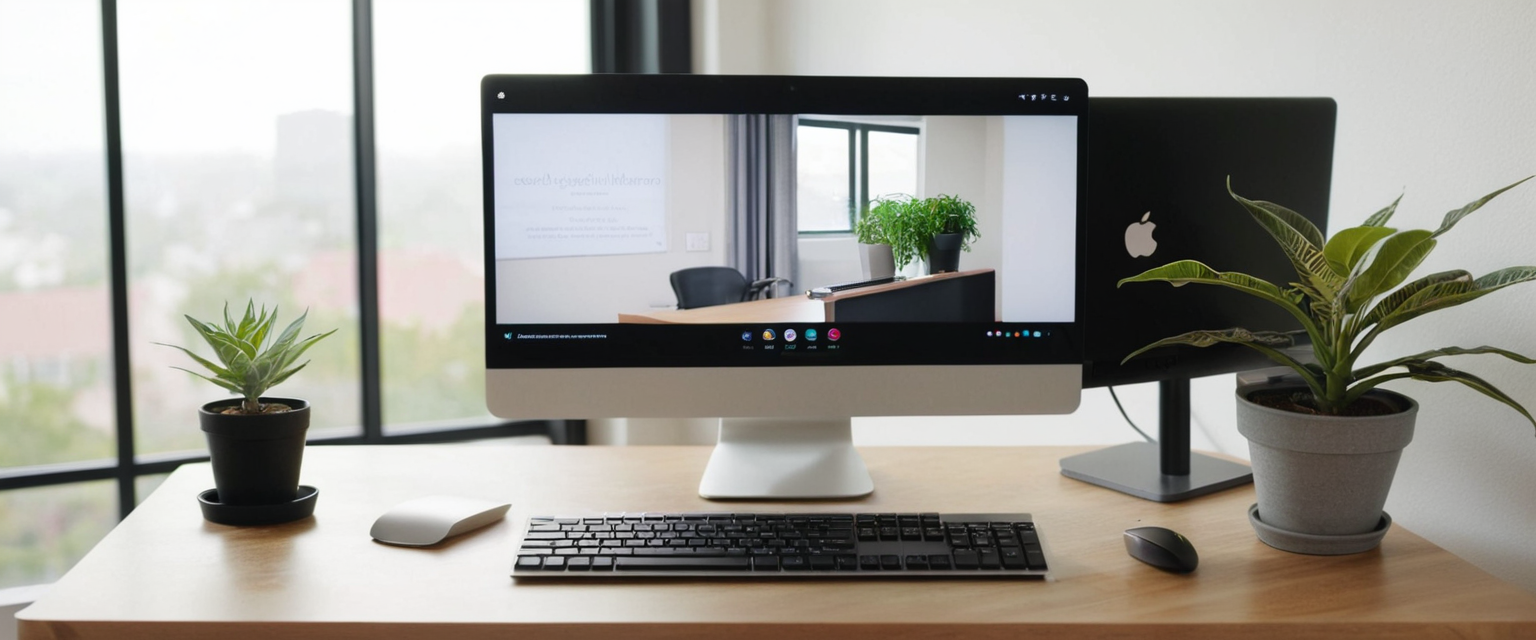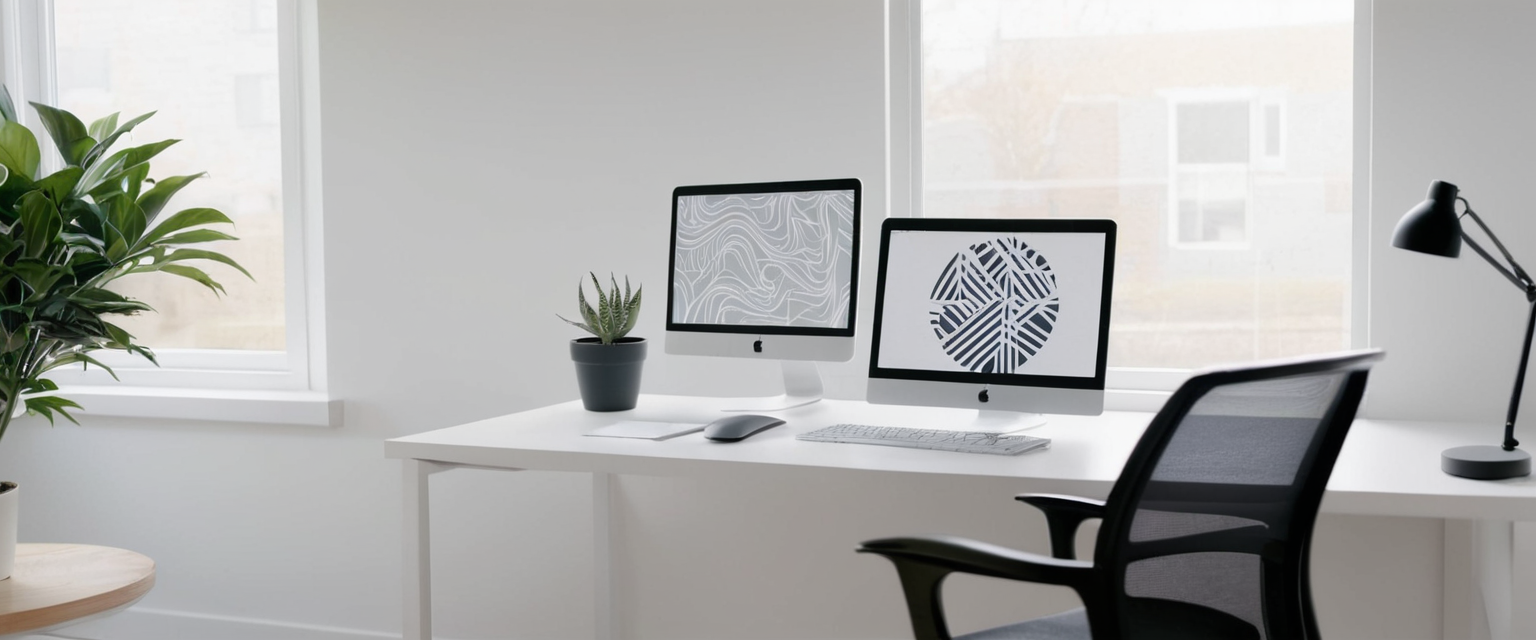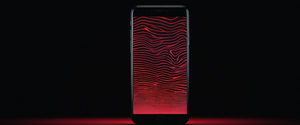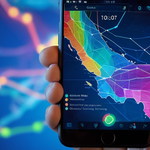
The rapid transition to remote work has fundamentally altered the relationship between employees and technology, particularly regarding cameras and microphones integrated into personal computing devices and home environments. This comprehensive report examines the multifaceted challenges of establishing privacy-respecting camera and microphone setups for work-from-home arrangements, addressing the intersection of technological solutions, legal frameworks, ethical considerations, and practical implementation strategies. The central finding is that truly effective privacy protection in remote work settings requires a layered approach combining physical barriers, technological safeguards, legal awareness, and organizational transparency, rather than relying on any single solution. Without deliberate attention to privacy by design principles and informed choices about video conferencing platforms, microphone protection, and camera placement, remote workers remain vulnerable to both intentional surveillance and inadvertent privacy breaches that can expose sensitive personal information about living situations, family relationships, financial status, and other intimate details never intended for workplace audiences.
Understanding the Privacy Landscape in Work-From-Home Environments
Remote work has created unprecedented privacy challenges that fundamentally differ from traditional office surveillance concerns. The home, historically recognized as the most protected space from surveillance under privacy law, has become an extension of the workplace, blurring critical legal and ethical boundaries. When employees participate in video calls from their residences, they unavoidably expose elements of their private environment—background details, family members, personal spaces, and intimate aspects of daily life—to professional colleagues and supervisors. Research examining privacy challenges during video-based meetings found that speakers’ webcams and audio streams frequently carry privacy-relevant information such as hints about living situations, family relationships, hobbies, and other personal details, with researchers observing that study participants revealed information about users’ musical abilities through visible instruments, political views, sexual orientations, and even presence of unaware third parties like children entering the frame during business meetings.
The psychological and practical implications of this privacy erosion extend beyond simple embarrassment about a cluttered background. Individuals who feel constantly observed often experience increased stress, anxiety, and reduced sense of autonomy in their own homes, which represents the highest expectation of privacy under law. This phenomenon, recognized in academic literature as the Hawthorne Effect, demonstrates that awareness of being monitored fundamentally alters behavior and psychological wellbeing. Additionally, the unintentional exposure of personal information creates security vulnerabilities that sophisticated actors can exploit for blackmail, identity theft, or social engineering attacks, while even casual observers can make inferences about an individual’s socioeconomic status, family structure, health conditions, or other sensitive characteristics based on background details.
The intersection of personal and professional technology use has compounded these risks. Many remote workers use personal devices for work communications, creating ambiguity about whether professional surveillance rights apply to inherently private equipment. Furthermore, the proliferation of connected smart home devices—security cameras, thermostats, voice assistants, and smart displays—means that compromised work devices can potentially grant attackers access to an individual’s entire home technology ecosystem. Unlike traditional office environments where surveillance is explicitly limited to designated commercial spaces, home-based work creates scenarios where employers theoretically could access video or audio feeds that capture deeply intimate moments, raising questions about what constitutes reasonable monitoring versus invasive surveillance.
Legal Framework Governing Workplace Surveillance in Remote Settings
The legal landscape surrounding camera and microphone use in remote work settings remains unsettled and varies significantly across federal, state, and international jurisdictions, creating complex compliance challenges for both employers and employees. At the federal level in the United States, the Electronic Communications Privacy Act (ECPA) establishes that employers may monitor employee communications and electronic activities on company-owned devices and networks, provided employees have been notified of such monitoring. However, the ECPA contains important limitations: employers cannot intercept personal communications or access personal devices without consent, and the law recognizes that different situations trigger different expectations of privacy.
The foundational concept underlying privacy protection in remote work settings is the “reasonable expectation of privacy,” established through Fourth Amendment jurisprudence and developed through state common law. This principle holds that individuals retain significantly greater privacy protections in their homes compared to commercial workplaces, creating a legal tension when employers attempt to monitor workers in residential settings. Several states have adopted specific legislation addressing workplace surveillance. For example, California’s Invasion of Privacy Act strictly prohibits recording private communications without consent and requires that any electronic monitoring be disclosed to employees before implementation. Connecticut mandates written notice before electronic monitoring occurs, while Delaware similarly requires employer notification of surveillance activities.
The most legally complex situation emerges when examining audio recording in remote work environments. The federal ECPA adopts a “one-party consent” standard, meaning that recording a conversation is legal if at least one participant (typically the employer) consents. However, several states including California, Delaware, Florida, Illinois, and Maryland require “all-party consent,” meaning every participant in a recorded conversation must explicitly agree to recording. This creates potential liability when employees working in all-party consent states participate in meetings recorded by employers based in one-party consent jurisdictions, with at least one court determining that the law of the state where a call originates governs legality. Furthermore, under the National Labor Relations Act, employers cannot use surveillance to monitor union organizing activities or discussions about wages and working conditions, and overly broad surveillance of communications can constitute an unfair labor practice.
The legal framework also increasingly incorporates data protection by design principles, particularly through the General Data Protection Regulation (GDPR) in Europe and emerging state privacy laws like California’s Consumer Privacy Act (CPRA). These frameworks require that privacy considerations be built into systems from inception rather than added afterward, shifting the burden to system designers to minimize data collection and provide technical safeguards by default. For employers subject to GDPR, relying solely on employee consent for monitoring is insufficient due to the inherent power imbalance in employment relationships; rather, employers must justify monitoring through legitimate business purposes and implement privacy-protective measures proportionate to stated objectives.
Physical Camera Placement and Barrier Strategies
The physical placement and coverage of cameras in work-from-home settings represents the foundational layer of privacy protection, particularly because physical barriers address threats that technical solutions cannot completely eliminate. Research into privacy covers for cameras demonstrates that users consistently perceive physical blocking as more trustworthy than software-only solutions, even when technical protections are theoretically stronger. This psychological reassurance has practical value—individuals who feel confident in their privacy protections experience less anxiety and tend to engage more naturally in professional interactions.
Professional webcam covers offer superior protection compared to improvised solutions like tape or adhesive notes, which can leave residue on lens surfaces or be easily displaced. The market for privacy covers has evolved to include manual slider mechanisms, magnetic attachments, and sophisticated designs that integrate into device frames without interfering with device functionality or leaving marks. For remote workers, investing in quality physical covers serves multiple purposes: they provide absolute protection when cameras are not in use, create visible confirmation of privacy status for both the user and anyone observing the device, and eliminate the need to remember to cover cameras through habit and design integration.
Beyond covering individual device cameras, the physical workspace itself requires strategic design to minimize inadvertent information leakage. Camera placement at eye level or slightly above creates better framing for professional appearance while reducing the visible background area, which research suggests helps maintain authenticity while limiting exposure of private environmental details. Positioning workspaces to maintain neutral backgrounds—or ensuring that items visible to cameras do not reveal sensitive information about living situations, relationships, or personal characteristics—requires deliberate environmental design. When neutral backgrounds cannot be achieved through physical arrangement, virtual background features provide an alternative, though research demonstrates that genuine backgrounds with appropriate organization create stronger impressions of authenticity and trustworthiness compared to artificial backgrounds. However, virtual backgrounds themselves present privacy considerations: they require significant computational resources, may leak information through glitches or brief visual transitions, and should be configured to avoid capturing unintended background details during transitions.
Strategic lighting represents an often-overlooked aspect of privacy-conscious camera setup. Good lighting serves dual purposes: it improves video quality for professional communication while simultaneously enabling the worker to see what the camera captures, promoting better awareness and control of exposed information. Positioning lights to illuminate the face and immediate workspace while avoiding illumination of sensitive background areas or windows that reveal exterior locations helps maintain privacy without degrading video quality. Additionally, avoiding backlighting from windows or bright exterior light sources prevents the “silhouette effect” where bright backgrounds render the person’s image dark and unflattering while potentially revealing identifying details about the location.

Advanced Privacy Protection Technologies and Solutions
Beyond physical barriers, a sophisticated ecosystem of technological solutions addresses privacy threats at multiple system levels. Webcam-specific hardware solutions include integrated microphone circuit breakers that provide hardware-level disabling of audio capture, representing a form of protection that cannot be compromised through software manipulation or remote attacks. These hardware solutions appeal particularly to security-conscious professionals and organizations handling sensitive information, as they provide absolute assurance that microphones cannot inadvertently transmit audio regardless of software vulnerabilities. The Luxafor Mute Button exemplifies another approach: a dedicated external USB device with tactile physical control and illuminated status indicators that allow users to instantly mute and unmute microphones with confidence, creating visible confirmation of microphone status for both the user and anyone present in the physical space.
Smart webcam covers represent an emerging category that combines physical blocking with automation, addressing the common user failure to remember to cover cameras manually. Research into smart cover designs has identified three distinct approaches: manual covers requiring deliberate user action each time, hybrid covers that automatically descend but require manual raising, and fully automatic covers that respond to camera activity status. User studies reveal that while manual covers provide reassurance through tangible control and visible state changes, automatic and hybrid covers reduce cognitive burden and ensure consistent protection even when users become distracted or forgetful. The most psychologically effective designs combine visible state indicators with user override capabilities, allowing automatic protection while maintaining user agency through emergency abort buttons.
Software-based protections complement physical solutions by providing monitoring and alerts when cameras or microphones are accessed. Security applications can monitor for unexpected camera activation, provide notifications when applications request microphone or camera permissions, and maintain logs of access events for forensic investigation. However, security researchers consistently emphasize that software solutions should complement rather than replace physical barriers, since sophisticated attackers can potentially disable software protections through kernel-level exploits or firmware-level compromises, whereas physical blocking provides protection that no amount of software manipulation can overcome.
Hardware kill switches represent the most aggressive privacy protection approach, particularly for individuals handling highly sensitive information or facing elevated threat levels. Certain laptop manufacturers now integrate physical switches that physically sever the electrical circuit to cameras and microphones at the hardware level, making them impossible to activate remotely regardless of software state. These kill switches typically operate at the motherboard level, completely eliminating camera and microphone functionality when activated, preventing even sophisticated remote access trojans (RATs) from activating these sensors. While hardware kill switches provide maximum protection, they render cameras and microphones completely unavailable when activated, requiring users to accept the inconvenience of toggling the switches when camera or microphone use becomes necessary.
Microphone-specific defense technologies include ultrasonic jamming systems designed for conference rooms and sensitive meeting spaces, which generate ultrasonic frequencies that interfere with microphone recording without producing audible sound to human participants. These systems create what the technology industry calls “acoustic interference,” generating a virtual privacy barrier that prevents unauthorized recording devices from capturing intelligible audio. While effective for highly confidential discussions in controlled environments, ultrasonic jamming systems are impractical for personal home offices and represent a specialized solution for organizations requiring maximum audio security.
Selecting Privacy-Respecting Video Conferencing Platforms
The choice of video conferencing platform fundamentally shapes the privacy characteristics of remote work communications. Major commercial platforms vary significantly in their approach to data handling, encryption, recording policies, and metadata collection, with important implications for privacy. End-to-end encryption represents the gold standard for video conferencing privacy: when properly implemented, this technical architecture ensures that communication content is encrypted on one device and can only be decrypted on receiving devices, meaning the platform provider cannot access call content even if required by law enforcement. Platforms implementing end-to-end encryption include Signal, Jitsi Meet, and Brave Talk, which provide privacy-first architectures designed specifically to minimize data collection and metadata leakage.
Zoom, one of the most widely adopted platforms, operates under a hybrid model where end-to-end encryption is available but not enabled by default for group meetings, requires premium features for full encryption, and has historically collected substantial metadata about meetings and participants. However, Zoom has responded to privacy concerns by implementing password protection for meetings, waiting rooms to vet participants before allowing access, and built-in security options that hosts can configure. For organizations requiring healthcare compliance, Zoom offers a specialized HIPAA-compliant version requiring signed Business Associate Agreements, which meets specific regulatory requirements for handling protected health information.
Microsoft Teams and Google Meet, while offering some privacy protections when configured through enterprise accounts with proper Business Associate Agreements, similarly do not provide end-to-end encryption by default for group meetings and collect metadata about communication patterns. Organizations evaluating platforms must consider whether default privacy settings align with their actual privacy requirements, since privacy protections that require multiple configuration steps or premium features are often inadvertently disabled or overlooked.
Privacy-forward platforms like Brave Talk, Jitsi Meet, and open-source alternatives prioritize privacy as a core architectural principle rather than an optional feature. Brave Talk, built directly into the Brave browser and powered by Jitsi as a Service, requires no account creation, enables multiple encryption layers by default, avoids saving metadata, and explicitly disclaims selling or sharing user data. Jitsi Meet provides self-hosting options allowing organizations to run video conferencing infrastructure on their own servers, eliminating reliance on third-party data handling and ensuring complete organizational control over encrypted communications.
For healthcare organizations, compliance frameworks like HIPAA require specific technical and administrative safeguards beyond simple encryption. Platforms offering HIPAA compliance include Zoom for Healthcare, Google Meet through Google Workspace, Microsoft Teams, Doxy.me, Curogram, and VSee, with compliance contingent on signed Business Associate Agreements and proper configuration. These platforms implement additional controls including user authentication, audit logging, encryption of data at rest and in transit, and regular security assessments.
Beyond encryption, organizations should evaluate platforms for features that reduce inadvertent privacy breaches during calls. These include background blur and virtual background capabilities that prevent accidental exposure of sensitive background details, participant controls that prevent screen sharing without explicit permission, and recording policies that require explicit consent before any recording occurs, with clear notification to all participants. Additionally, platforms should provide tools for participants to see what others see in their video stream, promoting transparency about what background information is visible.
Microphone Security and Audio Privacy Considerations
Audio privacy deserves equivalent attention to video privacy, yet organizations frequently neglect microphone protections or overlook audio recording implications in their remote work policies. The legal framework governing audio recording is particularly complex, as many jurisdictions require all-party consent before recording conversations, creating liability when employers record calls without explicit participant agreement. Unlike video, where individuals can see what is captured and thus manage information exposure, audio recording occurs invisibly, and people frequently say things in meetings they would be uncomfortable having permanently recorded.
Basic microphone management begins with awareness of when microphones are active and visible status indicators of microphone state. Physical mute buttons such as the Luxafor Mute Button and MuteMe provide hardware-level control with visual LED indicators showing microphone status, eliminating reliance on software mute states that might be overridden through software vulnerabilities. These devices connect via USB and prevent sound from being captured at the hardware level rather than simply silencing output in software, providing assurance that microphones are genuinely disabled. Professional-grade alternatives such as the Mic-Lock USB-C adapter prevent microphone access by blocking incoming and outgoing sound waves and electromagnetic signals, though at the cost of preventing all audio input and output including legitimate microphone use.
Organizational microphone policies should explicitly address when microphones must be muted during meetings, particularly in group calls where background noise from multiple unmuted participants degrades audio quality for everyone. Remote work best practices recommend that participants remain muted except when actively speaking, reducing the risk of inadvertent transmission of private conversations, family discussions, or other background noise that could reveal information about the worker’s environment. Meeting hosts should have clear policies about recording: research demonstrates that when participants know meetings are being recorded, they experience increased anxiety and modify their communication patterns.
Audio recording policies require careful attention to legal requirements specific to participant jurisdictions and explicit transparency about when recordings occur. The Electronic Communications Privacy Act’s one-party consent framework means employers in one-party states can legally record calls with their consent, but this authority does not extend to employees located in all-party consent states unless those employees have specifically agreed to recording. Organizations should implement meeting policies that clearly communicate before calls begin whether recording is occurring and which participants are subject to recording, giving individuals the option to decline participation rather than discovering after the fact that their conversations were recorded.
Beyond traditional microphone management, acoustic privacy considerations address the broader audio environment of remote workspaces. Research on privacy challenges in video meetings found that audio streams often carry unintended information about living situations, such as background conversations, music, pets, children, or other sounds that reveal information about family composition and relationships. Acoustic privacy strategies include positioning workspaces away from high-traffic family areas, using noise-cancellation headphones to minimize background audio capture, and educating household members about maintaining acoustic privacy during professional calls.

Best Practices for Privacy-Conscious Remote Work Setup
Comprehensive privacy protection in remote work settings requires systematic implementation of multiple protective strategies rather than reliance on single solutions. Transparency with employers represents the foundational best practice: remote workers should understand their organization’s remote work policies, surveillance practices, and privacy protections before beginning work. Employees should specifically seek clarity about whether employers monitor webcams, record calls, track mouse movements or keyboard activity, monitor internet usage, or collect other activity data, and should obtain written confirmation of these policies. This transparency facilitates informed decision-making and creates opportunity for employees to raise privacy concerns before they escalate into conflicts.
Device and workspace segregation helps contain monitoring and surveillance to work-related activities while protecting personal device use from employer monitoring. When possible, remote workers should use employer-provided devices exclusively for work communications and maintain separate personal devices for personal activities, preventing spillover of employer surveillance into genuinely private contexts. If using personal devices for work, workers should understand what monitoring software employers may have installed, what permissions have been granted to employer applications, and what personal information might be inadvertently exposed through work apps.
Physical workspace design should prioritize both video and audio privacy through thoughtful arrangement and equipment selection. The optimal remote workspace features positioned camera equipment at eye level or slightly above to frame face and shoulders while minimizing background exposure, appropriate lighting that illuminates the face without creating exposure of sensitive background areas, and positioning relative to windows and other light sources that prevents “silhouette” effects while maintaining background control. Acoustic privacy benefits from positioning workspaces away from high-traffic family areas, using furniture and materials that absorb sound to reduce background audio capture, and when necessary, using noise-cancelling headphones to minimize ambient sound transmission to meeting participants.
Default privacy settings for personal devices should be configured to maximize protection. Operating systems should be updated to current versions including latest security patches that address known vulnerabilities in camera and microphone access controls. Strong, unique passwords and two-factor authentication should be enabled for all accounts, particularly email and accounts linked to video conferencing platforms, reducing the risk of unauthorized account access that could enable surveillance. Application permissions should be carefully reviewed during installation and setup: remote workers should prevent applications from accessing cameras and microphones unless those applications explicitly require these sensors for their functionality. Webcams should be physically covered when not in active use, either with commercially available covers or with tape or adhesive notes, providing absolute assurance against covert camera activation.
Informed platform selection requires evaluating video conferencing platforms for privacy features relevant to organizational context. For organizations handling sensitive information or requiring regulatory compliance, end-to-end encrypted platforms with privacy-first architectures like Jitsi Meet or Brave Talk provide stronger default protections than commercial platforms requiring configuration of optional privacy features. For organizations already committed to commercial platforms like Zoom or Microsoft Teams, using premium versions that enable end-to-end encryption, configuring waiting rooms to vet participants, requiring passwords for meetings, and implementing host controls that prevent unauthorized screen sharing and recording help mitigate privacy risks.
Recording and consent protocols should establish clear organizational policies about when and how meetings are recorded. Before recording occurs, all participants should be notified and given opportunity to review and accept recording policies or decline participation. Organizations should maintain records of who has access to recordings, how long recordings are retained, and what purposes they serve, with regular deletion of recordings that have served their purpose. Employees should have access to their own recordings to verify what was captured and ensure no unintended information was included.
Building Organizational Culture Around Privacy Respect
Meaningful privacy protection in remote work settings transcends individual technical measures to encompass organizational culture and leadership commitment to privacy as a core value. Research consistently demonstrates that transparency about surveillance practices significantly improves employee acceptance and engagement, with employees experiencing 7% better productivity when informed about what is being tracked and why. Organizations that invest in clearly communicating monitoring practices, explaining business justifications, and soliciting employee input during surveillance policy development experience higher trust and lower resistance compared to organizations that implement surveillance covertly.
Proportionality and necessity should guide organizational surveillance decisions. Rather than implementing maximum possible monitoring, organizations should conduct Data Protection Impact Assessments examining whether proposed surveillance is necessary for legitimate business purposes, whether less invasive alternatives could achieve the same objectives, and whether the monitoring scope is limited to collecting minimum data necessary for stated purposes. This approach aligns with privacy-by-design principles now mandated by GDPR and increasingly incorporated into state privacy legislation. For example, organizations that desire productivity monitoring could track task completion and project progress rather than continuous keystroke monitoring or webcam surveillance, achieving business objectives through less invasive means.
Employee participation in policy development creates shared ownership of privacy protections and helps identify practical concerns that might be overlooked in top-down policy implementation. When organizations involve representative samples of employees in surveillance policy planning, these employees provide valuable perspective on privacy impacts and feasibility of proposed measures, and they subsequently become advocates for policy adherence within their peer networks. Additionally, inviting employee feedback acknowledges dignity and builds trust, whereas imposing surveillance unilaterally often generates resistance and resentment regardless of legal permissibility.
Data security and access controls for surveillance data must reflect the sensitivity of collected information. Surveillance data should be stored with encryption, access should be limited to individuals with documented legitimate need, and regular audits should verify who has accessed data and for what purposes. Data should be retained only as long as necessary for stated purposes, with regular deletion protocols ensuring surveillance data does not accumulate indefinitely. Organizations should implement USB device controls and other technical measures preventing unauthorized copying or exfiltration of surveillance data, and managers with access to surveillance data should receive training on appropriate use and confidentiality obligations.
Privacy-first defaults in organizational systems reflect commitment to privacy as a value rather than an afterthought. Video conferencing platforms should have privacy-protective defaults: meetings should require passwords and waiting rooms by default rather than requiring configuration, recording should be disabled and require explicit enabling rather than recording by default, and participant consent should be required before recording rather than assuming consent. Calendar systems should allow employees to control visibility of meeting details rather than exposing full meeting information to all colleagues. Communication tools should support ephemeral messages that automatically delete rather than creating permanent records of casual conversations.
Privacy Implications of Specific Remote Work Scenarios
Hybrid and rotating in-office work arrangements create additional complexity for privacy protections, as workers may use the same devices in both home offices and shared workplace environments. Organizations should acknowledge that hybrid workers have legitimate privacy concerns in both contexts and should design policies that respect privacy regardless of work location. Employees rotating between home and office should not be required to permanently disallow privacy covers on cameras or be forced to keep microphones constantly enabled, as this violates privacy in genuinely private home environments and interferes with personal time.
Shared device scenarios in families where multiple household members use the same laptop for personal and professional purposes present particularly complex privacy challenges. Employers cannot reasonably expect to monitor shared devices, as this would inevitably capture personal information about non-employees and violate privacy rights of household members who have no employment relationship with the organization. Organizations should decline to monitor shared devices and instead provide personal devices for work or allow BYOD (bring your own device) policies that explicitly exclude employer monitoring of personal devices.
Virtual background and background blur usage deserves consideration within organizational policy frameworks. While some organizational leaders have suggested that virtual backgrounds undermine authenticity, research examining privacy impacts of virtual backgrounds found that they serve legitimate privacy protection purposes for employees who lack dedicated home offices or who cannot rearrange living spaces to hide sensitive personal information. Organizations should permit and encourage virtual background use as a privacy-protective measure rather than requiring employees to expose background details, recognizing that privacy enables rather than hinders professional authenticity.
Coworkers and family privacy requires attention to scenarios where video conferencing occurs in shared household spaces or where family members might inadvertently appear in background. Employees should not be disciplined for incidental family member appearances in video backgrounds, as this violates privacy of non-employees and places unrealistic expectations on workers to segregate family life from professional calls. Organizations should adopt policies acknowledging that remote work occurs in residential settings where other household members are present and reasonably expect privacy in common household spaces.
Crafting Your Discreet Digital Presence
The establishment of privacy-respecting camera and microphone setups in work-from-home environments demands multi-layered approaches addressing physical, technical, legal, and organizational dimensions simultaneously. No single solution—whether physical camera covers, software protections, encryption protocols, or organizational policies—provides complete privacy assurance; rather, effective protection emerges through systematic integration of complementary measures that address different threat vectors and scenarios.
The physical foundation of privacy protection should always include quality webcam covers providing manual control of camera access, creating visible confirmation of privacy status and psychological assurance that unauthorized surveillance is impossible. These inexpensive, reliable measures address threats that technical solutions alone cannot fully prevent and should be considered non-negotiable baseline protections. More sophisticated hardware protections such as microphone circuit breakers, hardware kill switches, and dedicated mute buttons provide elevated protection appropriate for workers handling extremely sensitive information or facing elevated threat profiles.
Platform selection fundamentally shapes privacy outcomes, with end-to-end encrypted, privacy-first architectures like Jitsi Meet and Brave Talk providing stronger default protections than commercial platforms requiring configuration of optional privacy features. Organizations should evaluate platforms not based on marketing claims but through careful assessment of technical architecture, default privacy settings, data handling practices, and willingness to provide Business Associate Agreements when required.
Legal compliance and organizational transparency should drive remote work surveillance policies, with organizations clearly communicating monitoring practices, implementing monitoring only when genuinely necessary for legitimate business purposes, and respecting legal distinctions between one-party and all-party consent jurisdictions for recording. Privacy-by-design principles should guide policy development, requiring that privacy considerations be integrated from policy inception rather than added afterward.
Organizational culture supporting privacy as a core value—rather than merely a legal constraint to be minimized—enables sustainable remote work arrangements that protect both employee privacy and organizational interests. When employees understand that organizations respect their privacy, receive transparent communication about surveillance practices, and have opportunities to participate in policy development, they experience higher engagement and productivity while maintaining psychological wellbeing that remote surveillance can otherwise undermine.
Remote workers themselves should take proactive responsibility for privacy protection through deliberate device configuration, workspace design, informed platform selection, and advocacy for organizational privacy policies. Covering cameras, configuring strong passwords and multi-factor authentication, reviewing application permissions, segregating personal and work devices where possible, and actively managing background information visible to colleagues all represent accessible measures within individual control.
As remote work continues as a permanent feature of modern employment rather than temporary pandemic accommodation, investment in privacy-respecting camera and microphone infrastructure should be viewed as foundational infrastructure rather than optional enhancement. Privacy protection enables rather than hinders effective remote work: employees who feel confident their privacy is respected and that surveillance is transparent and limited to legitimate purposes engage more actively in collaboration, experience less stress and anxiety, and maintain the psychological boundaries necessary for healthy work-life balance. Conversely, employees who perceive their privacy as violated or who experience covert or excessive surveillance often disengage, experience burnout, and develop adversarial relationships with employers.
The pathway forward requires sustained commitment from all stakeholders—remote workers maintaining individual privacy protections, organizations establishing transparent and proportionate surveillance policies respecting legal boundaries and privacy principles, platform providers building privacy protections into technical architecture rather than offering them as optional add-ons, and policymakers continuing to evolve legal frameworks addressing the unique privacy challenges of distributed work environments. Through this multi-stakeholder approach grounded in respect for privacy as a fundamental right rather than mere compliance obligation, organizations can establish remote work infrastructure that enables both productivity and human dignity.
Protect Your Digital Life with Activate Security
Get 14 powerful security tools in one comprehensive suite. VPN, antivirus, password manager, dark web monitoring, and more.
Get Protected Now





